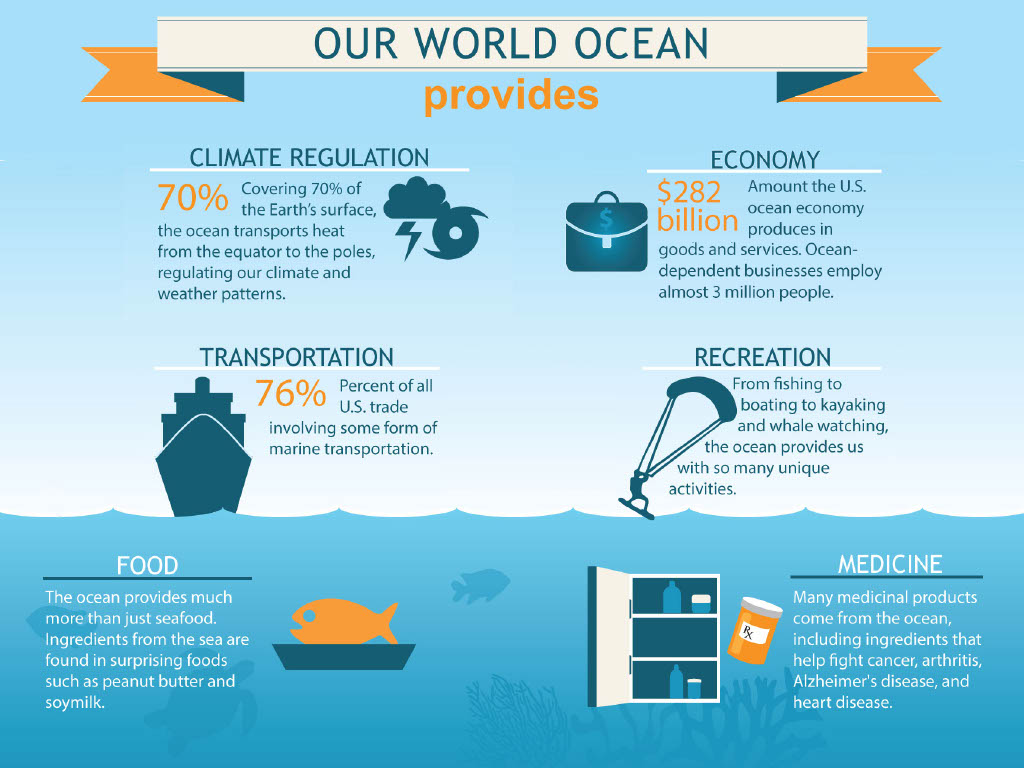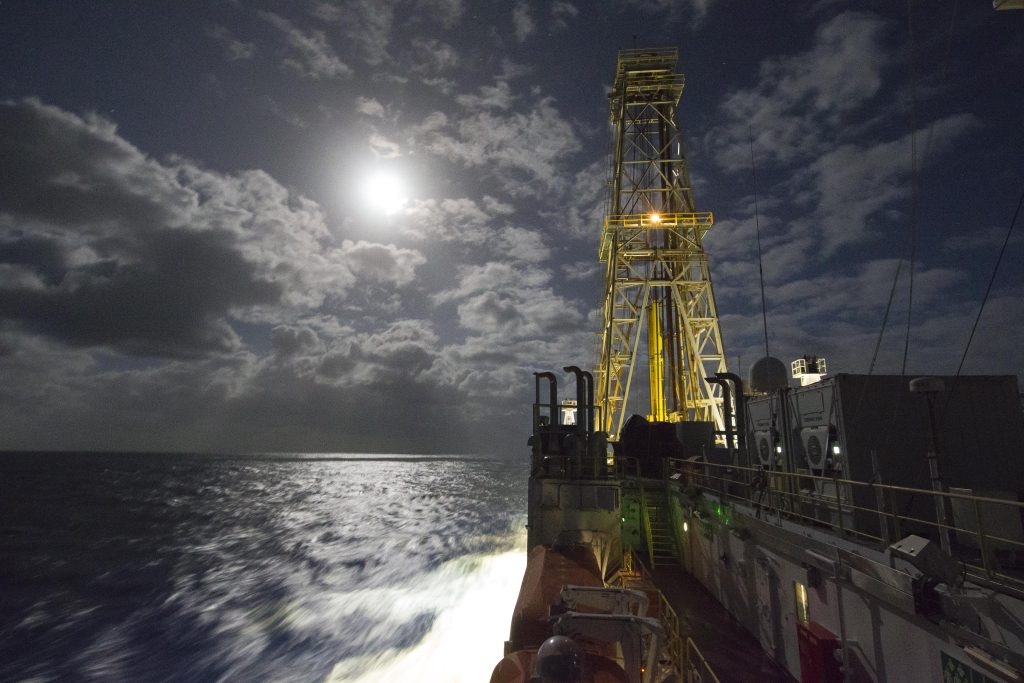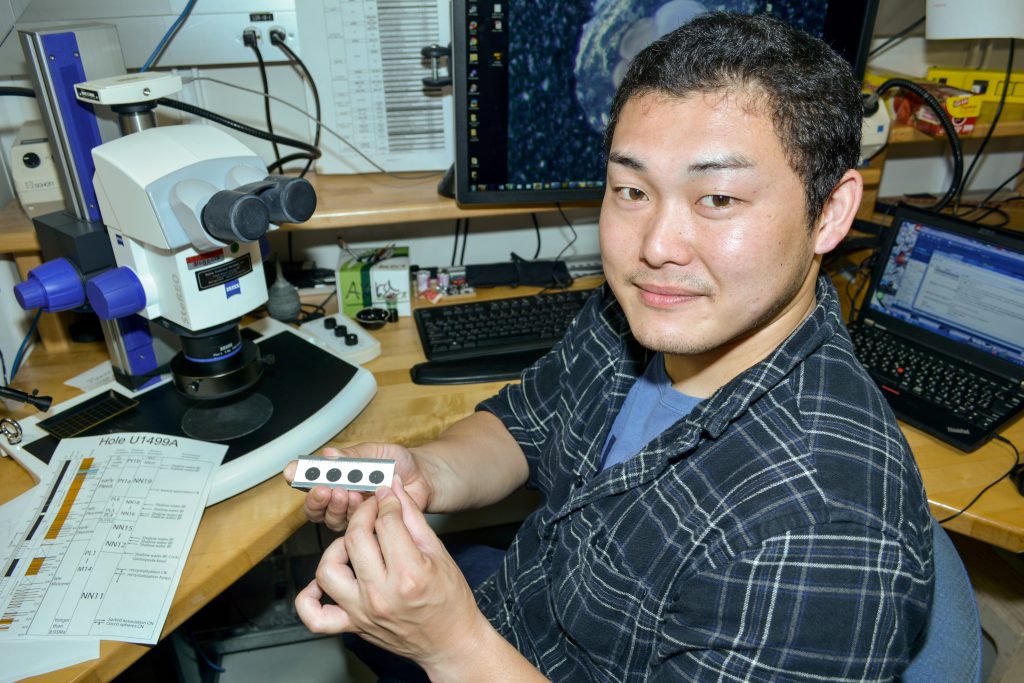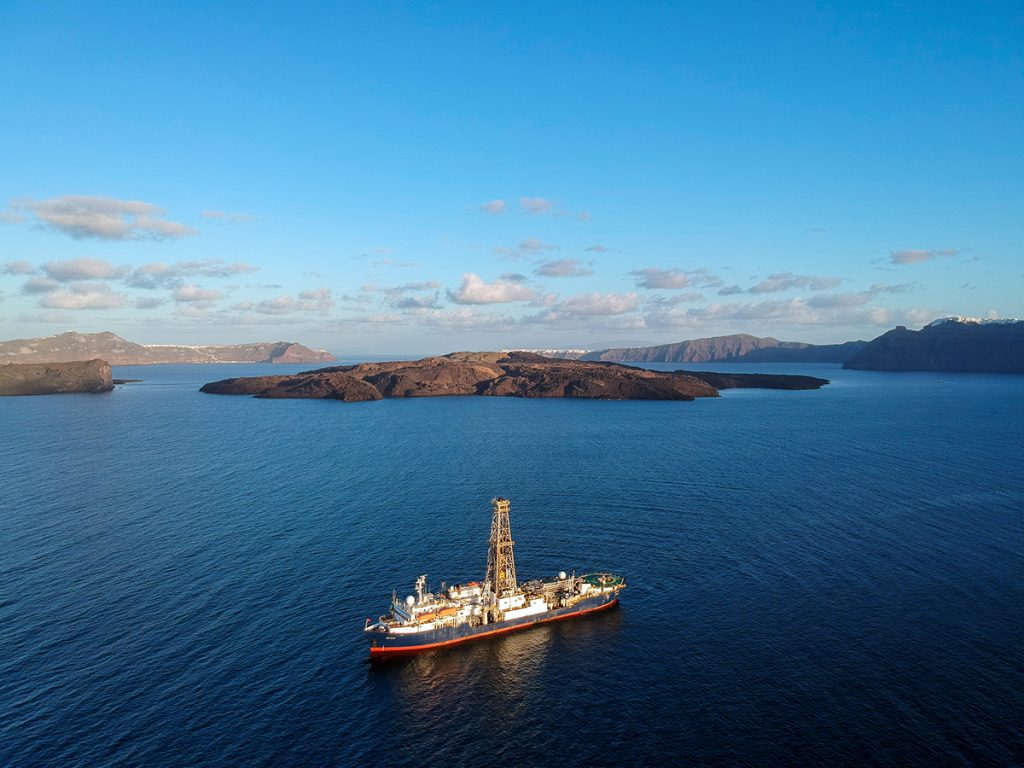1.5 Ocean Literacy
Ocean literacy is an understanding of the ocean’s influence on you – and your influence on the ocean. An ocean-literate person understands the essential principles and fundamental concepts about the functioning of the ocean; can communicate about the ocean in a meaningful way; and is able to make informed and responsible decisions regarding the ocean and its resources. — from NOAA’s definition of ocean literacy
Although this OER focuses on the ocean’s subsurface materials and properties, it is important to start with an acknowledgment of our full global ocean and how critical it is to our planet.
No matter where you live, everyone has a connection to the ocean. The ocean plays a significant role in providing everything from the air we breathe to employment and recreation activities. This graphic from the National Oceanic and Atmospheric Administration (NOAA) is a small snapshot of why the ocean is important to humans and Planet Earth as a whole.

Our World Ocean (description of above image)
Image Description: The image is an infographic titled “Our World Ocean Provides,” which describes the various benefits provided by the ocean. It’s divided into six sections: Climate Regulation, Economy, Transportation, Recreation, Food, and Medicine.
At the top, there is a banner with the title “Our World Ocean provides” in capital letters. Each section includes an icon, a headline, and a brief description.
“Climate Regulation” section features an icon of a cloud with a lightning bolt and states that the ocean covers 70% of the Earth’s surface and is essential for regulating climate and weather patterns.
“Economy” section shows a briefcase icon, noting that the U.S. ocean economy produces $282 billion in goods and services and employs nearly three million people.
“Transportation” section has a ship icon and mentions that 76% of U.S. trade involves marine transportation.
“Recreation” section displays a fishing rod icon and lists activities like fishing, boating, kayaking, and whale watching as ocean benefits.
“Food” section includes an icon of a fish on a plate and describes the ocean’s contribution to various foods, beyond seafood.
“Medicine” section features an image of a medicine cabinet with pills, noting that medicinal products from the ocean help treat various diseases.
The background includes a visual element of a water surface with silhouettes of marine animals like fish, indicating the ocean’s ecosystem.
Transcription of Text:
Title: OUR WORLD OCEAN provides
CLIMATE REGULATION 70% Covering 70% of the Earth’s surface, the ocean transports heat from the equator to the poles, regulating our climate and weather patterns.
ECONOMY $282 billion Amount the U.S. ocean economy produces in goods and services. Ocean-dependent businesses employ almost 3 million people.
TRANSPORTATION 76% Percent of all U.S. trade involving some form of marine transportation.
RECREATION From fishing to boating to kayaking and whale watching, the ocean provides us with so many unique activities.
FOOD The ocean provides much more than just seafood. Ingredients from the sea are found in surprising foods such as peanut butter and soymilk.
MEDICINE Many medicinal products come from the ocean, including ingredients that help fight cancer, arthritis, Alzheimer’s disease, and heart disease.
Not everyone can know every fact about the ocean, but there are pieces of information about the ocean and why it matters that every person should be familiar with. Learning this fundamental ocean knowledge starts in our classrooms. In 2005, over 100 scientists and educators came together to develop a framework to help educators tap into the interdisciplinary nature of ocean science. From there, seven essential principles of ocean literacy were developed for learners of all ages. Version 3.2 of the Ocean Literacy Principles was published January 2024.
Scientific Ocean Drilling and Ocean Literacy
There are multiple ways in which scientific ocean drilling connects to the Essential Principles of Ocean Literacy. Three of them are listed here, but a quick scan of the Ocean Literacy Principles document will show that there are many other connections between the Principles and scientific ocean drilling.
(1) Earth has one big ocean with many features
This ocean principle addresses the physical features generated through plate tectonic activity, the interconnectedness of the circulation of air/water/wind/heat, the water cycle, and finite ocean resources. It is important to note that the features of our ocean can be impacted from not just what is happening above and on the seafloor, but scientific ocean drilling research will contribute to our understanding of the impact from what is underneath.

(5) The ocean supports a great diversity of life and ecosystems
Life in the ocean includes organisms that range from the largest living animal on the planet (the blue whale), to the smallest microbes. Cores drilled through ocean sediments and basement material help scientists learn about the fossilized and living microbes and their diversity in the ocean. There is much to learn as we explore how microbial communities vary with the composition and age of material in which they exist. Deep ocean ecosystems are specifically mentioned in this ocean literacy principle, including how diverse and unique these systems are as they extend below the seafloor. Not all expeditions explore the living component in the deep sea, but significant technological advances allow us to collect and preserve deep-sea materials that can then be transported to land-based laboratories for analyses.

(7) The ocean is largely unexplored
The ocean covers approximately 71% of the surface of Planet Earth, yet roughly 80% has yet to be explored. The technologies and tools on JOIDES Resolution allow us to better collect and process the materials for investigations where no material had ever been sampled before.
Scientists Chris Lowery and Laura Guertin discuss how there is so much to learn at and below the seafloor.
Again, this is not an exhaustive list of all the connections between scientific ocean drilling and the Ocean Literacy Principles, but it is a starting point for seeing how studying continues cores drilled in the deep sea advances ocean literacy. These investigations on archive core material are still carried out today by scientists from across the globe trained in a variety of scientific and technological disciplines (geologists, microbiologists, computer technicians, imaging specialists, etc.).
Exercise: Applying the Ocean Literacy Principles

Read through this plain language summary from the Proceedings of IODP Expedition 398, the Hellenic Arc Volcanic Field and respond to the questions below:
About 800 million people are threatened by volcanic eruptions around the globe: high plumes of ash, ground-hugging flows of hot ash and rock, earthquakes, and associated tsunamis. The Christiana-Santorini-Kolumbo volcanic group in the Aegean Sea of Greece is particularly hazardous because the volcanoes have produced many eruptions in the past, and some were highly explosive. Santorini is an iconic volcano because of its well-known eruption in the Late Bronze Age, and it is a major tourist destination. Although much has been learned about the eruption history of the Aegean volcanoes on land, most of their volcanic products lie on the seafloor, requiring research to move offshore.
During International Ocean Discovery Program Expedition 398, we drilled the submarine sediment sequences, including the muds and volcanic products that fill the marine basins around the volcanoes and inside of Santorini caldera, at 12 sites. Outside of the caldera, we penetrated many layers of pumice and ash that represent eruptive products settled at the seafloor. Some of these layers represent hitherto unknown explosive eruptions whose products do not occur on land. The ages of the different layers were determined mainly from the assemblages of microfossils preserved in them. We also identified times in the past when large fault movements and earthquakes appear to have caused remobilization of previously deposited ash layers, causing them to pour into the actively deepening basins. In the Christiana Basin south of Santorini, we unexpectedly penetrated a thick sequence of evaporites formed 5.99–5.33 My ago during the so-called Messinian Salinity Crisis. Inside Santorini caldera, we drilled through sediments and volcanic products that have accumulated there since the Late Bronze Age eruption, offering a detailed record of the previously inaccessible prehistoric evolution of Kameni Volcano, inside the caldera. At two sites inside Santorini caldera and two others outside, we collected samples for microbiological and genetic analysis to identify and characterize any microbial life living in the muds below the sediment surface.
Despite variable recovery in the unstable pumice and ash deposits, the expedition was a great success that will enable us to address almost all of the original scientific objectives once detailed laboratory work has been done. Some particularly important aims will be to link the volcanic activity to ancient crustal tectonic processes, as well as to variations in sea level through time due to changes in Earth’s climate, and see any governing feedbacks between these processes.
a) Which of the Ocean Literacy Principles match the work of EXP 398?
b) What information helped you decide which Ocean Literacy Principles apply here?
[Text on this page was adapted from JR EXP 390 blog post, How Expedition 390 Advances Ocean Literacy]

